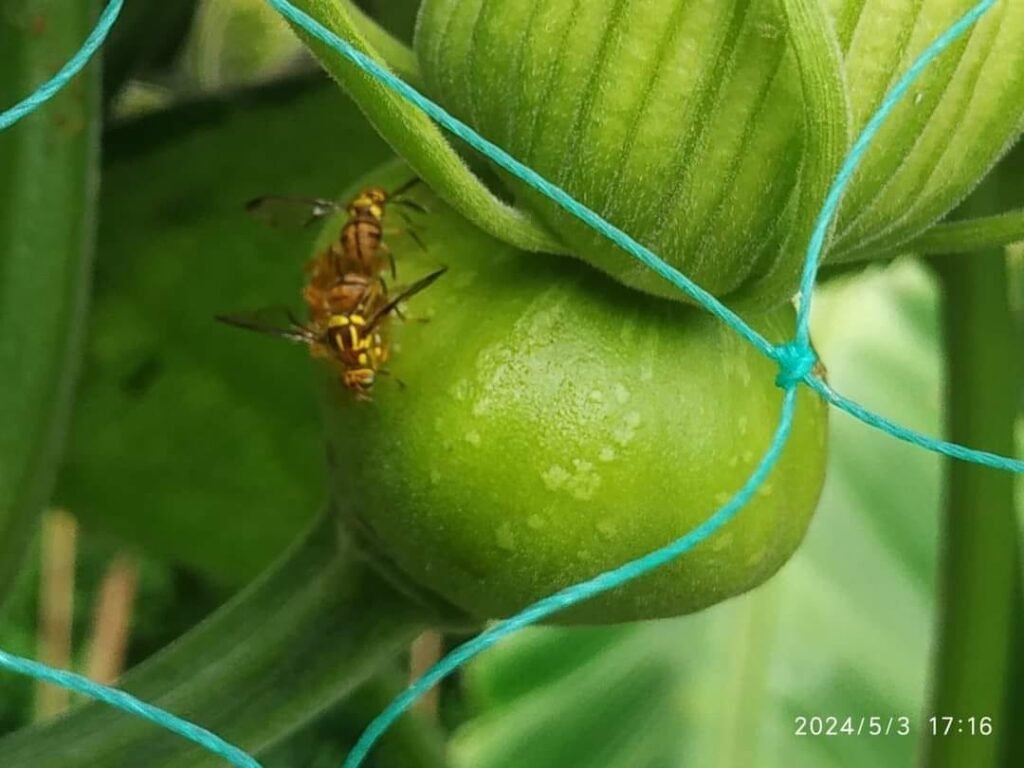Fruit flies are particularly harmful to pumpkin crops, including sweet pumpkins. Effective management involves using pheromone traps and other integrated pest management techniques. Here is a detailed guide to controlling pumpkin fruit flies:
Symptoms of Fruit Fly Infestation
- Egg Laying: Female fruit flies insert ovipositors on the underside of young fruit to lay eggs.
- Fluid Oozing: A watery fluid exudes from the egg-laying site, which dries and turns brown.
- Larval Feeding: Larvae hatch from the eggs and feed on the fruit juice, causing the fruit to deform, turn yellow, and rot.
Suppression Management
Pheromone Traps
Pheromone traps are highly effective in controlling fruit fly populations.
- Trap Placement:
- Use one pheromone trap for every 4-5 hectares.
- Attach the pheromone trap to bamboo poles, positioning it 1 ft above the tree canopy level.
- Maintenance:
- Regularly change the water in the pheromone trap.
- Clean out dead insects frequently.
- A single pheromone lure is effective for up to 2 months.
Poison Bait
- Preparation:
- Cut 100 grams of ripe sweet pumpkin or similar fruit into small pieces.
- Mix with an appropriate insecticide to create a poison bait.
- Placement:
- Place the bait in an earthen pot and position it in the middle of the field.

Other Control Methods
- Sanitation:
- Collect and destroy or burn infested fruits or flowers to prevent the spread of larvae.
- Fruit Protection:
- Cover young fruits with paper or polythene to protect them from egg-laying flies.
- Early Trap Placement:
- Set up pheromone traps at the rate of 3 per 10 hectares as soon as the first flowers appear on the pumpkin plants.
- Alternative Poison Bait:
- Mix a little poison in mango or date juice and place it in a bottle with a window cut out. Place the bottle in the field to attract and kill flies.
- Alternatively, mix 100 grams of ripe sweet pumpkin or similar fruits with a small amount of poison (e.g., Sapsin 0.25 grams) and place the bait in an earthen container in the middle of the field.
- Insecticide Spraying:
- You can use Cypermethrin group insecticides .
- Mix 1 ml of the insecticide per liter of water and spray thoroughly on the affected plants.
By implementing these integrated pest management strategies, you can effectively control fruit fly populations and protect your sweet pumpkin crops from damage. Regular monitoring and maintenance are key to ensuring the health and productivity of your plants.

